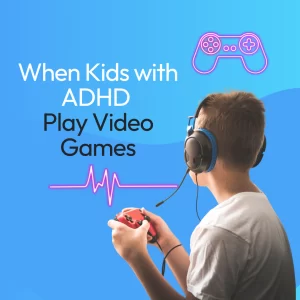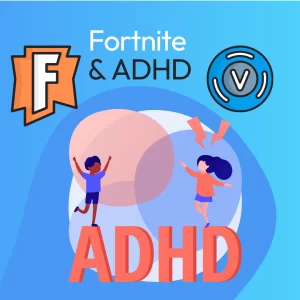Youth suicide is rare, but when a young person does end their own life it devastates families, schools, and communities. And while deaths by suicide are, indeed, rare, the percentage of young people who report feelings of hopelessness, sadness, and even suicidal thoughts is alarmingly high. Over a third of high school students in the United States reported feeling “sad or hopeless.” And not just for a day. Almost 37% of youth report feeling sad or hopeless almost everyday for two weeks. The feelings of sadness were strong enough that they report not engaging in valued activities. These facts should be very troubling to us, and focus our attention on how important suicide prevention programs are.
Project Firefly was developed by Stand4Kind as a gatekeeper program to protect young people from suicide. A gatekeeper is a person, in this case, who can recognize the signs and symptoms of suicide in others. Creating a community of Fireflies–lights in the darkness–with the vision to recognize when others are struggling and the skills to intervene is the goal. Project Firefly teaches students and teachers to L.I.T.E. the way for others.
- Listen to the person & Look for the signs of crisis.
- Identify the signs of crisis & Intervene
- Take the person in crisis to support & Take away means of suicide
- Engage & Encourage after the crisis has ended
Listening to the person & Looking for the signs of crisis
We know that most people who experience suicidal ideations attempt to communicate to others that they are in need of support. If we can give that person our full attention and offer them an opportunity to safely tell us what they are experiencing, the person in crisis will ask for our help. It is important that Fireflies are non-judgmental, not distracted, and empathizing with the person we are listening to. We know that our first instinct is to talk, talk, talk. Which is why our first step in the process is to LISTEN. Prevention starts with our ability to empathetically listen.
Looking for the signs of crisis is why we listen. When people are searching for help, they can communicate directly (e.g., “I am having thoughts about dying, they are scaring me, and I think I need help.”) or indirectly (e.g., “I am just so tired of life.”). Hearing these statements can be hard. Trying to say them, harder. But it is necessary that we look for the signals so we can provide the support.
Once we Identify the signs of crisis, we Intervene
The best intervention we can offer is ourselves. We want to be present, engaged, and focused on the person in front of us. Asking someone if they are having suicidal thoughts is one of the scariest questions we can ask. We pray the answer is “no.” But, when the answer is some form of “yes,” we need to be ready. Asking “the question” is straight forward: Sometimes when people say things that you are saying, they are also experiencing suicidal thoughts. Are you experiencing thoughts about hurting or killing yourself?” Just like that. That short. That direct. No ambiguity.
It is important that we stay calm during this process. After all, the person we are Listening to is in crisis. If we are also in crisis, we can not help them. Secondly, remember that it is your job to Listen, and provide hope. Not lecture them on the reasons they should want to live. The goal when we intervene is to give the person a sense of calm. Ultimately, we want them to let us help them find support.
Intervening to help the person in crisis and find support involves knowing what resources are available to you. This differs from place to place, but we will leave some links at the bottom of the article to point you in the right directions for community support.
Take the person to support & Take away means of suicide
When a person we know is experiencing suicidal thoughts, there are a couple of things we must do to link to the support we need.
- Take the situation seriously
- Suicide is a moment of crisis. And if the person you are listening to asks to “be alone,” the answer from us is No.
- It takes a lot of courage to ask for help. Take the person seriously or they may loose the courage they mustered to come to you in the first place.
- Weigh the options that are available to you
- It might be late at night. You might be communicating with your friend over text message. You are going to have to consider the specifics of your situation as you are weighing the options to you.
- Is this person at home? Are there parents around? Are your parents home? If you are at school, can you get a teacher or counselor involved? Call 911 if there is an active suicide attempt, or emergency.
- If the person refuses to engage with immediate support, like parents or teachers, there are options to call or text different crisis lines.
- It can be scary to talk to an adult in a moment of crisis. But there are neutral adults available and a number of different resources around the country.
Take away the means of suicide
The second part of this step is to remove means of suicide. This involves asking the person who has told you they are thinking about suicide if they have a plan to kill themselves. We are going to ask the person if they have medications stockpiled, or if they have a firearm. If they tell us they have rope hidden they were going to use to hurt themselves, we must ask them to give it to us.
In the moment of crisis remember that us being supportive is the first priority. Letting the person in crisis know that we care about them. Giving the person in crisis hope, and helping pull them back from the edge of the crisis and help them see that there is a future for them that is not being dead.
Last year, 18.8% of youth actively considered suicide. 1 out of 5 young people. And 15.7% of youth actually made a plan to die. As Fireflies in the community, we can provide a light in the darkness. You can provide hope and connect a person in crisis to the support that can save a life.
Some additional resources:
Psychological Flexibility – Acceptance v. Experiential Avoidance



